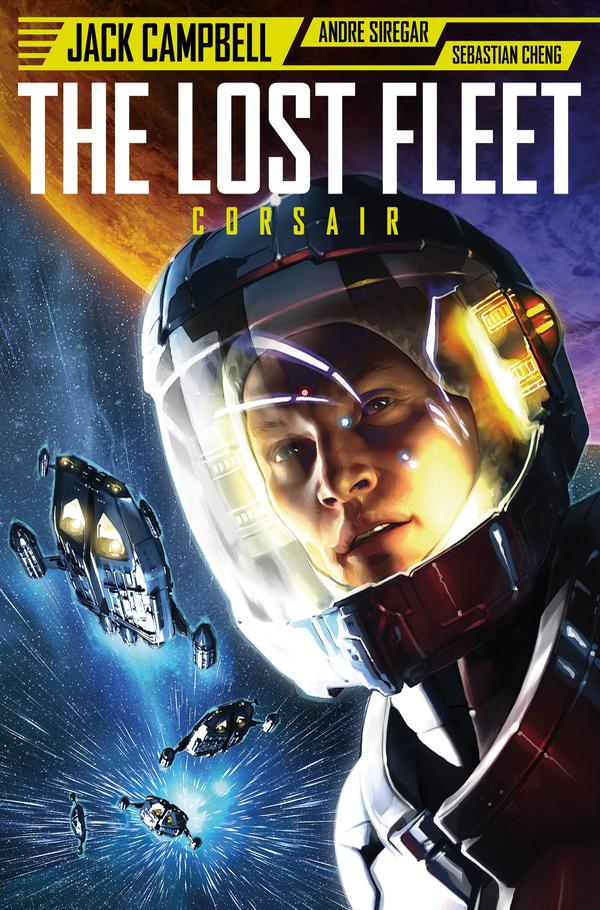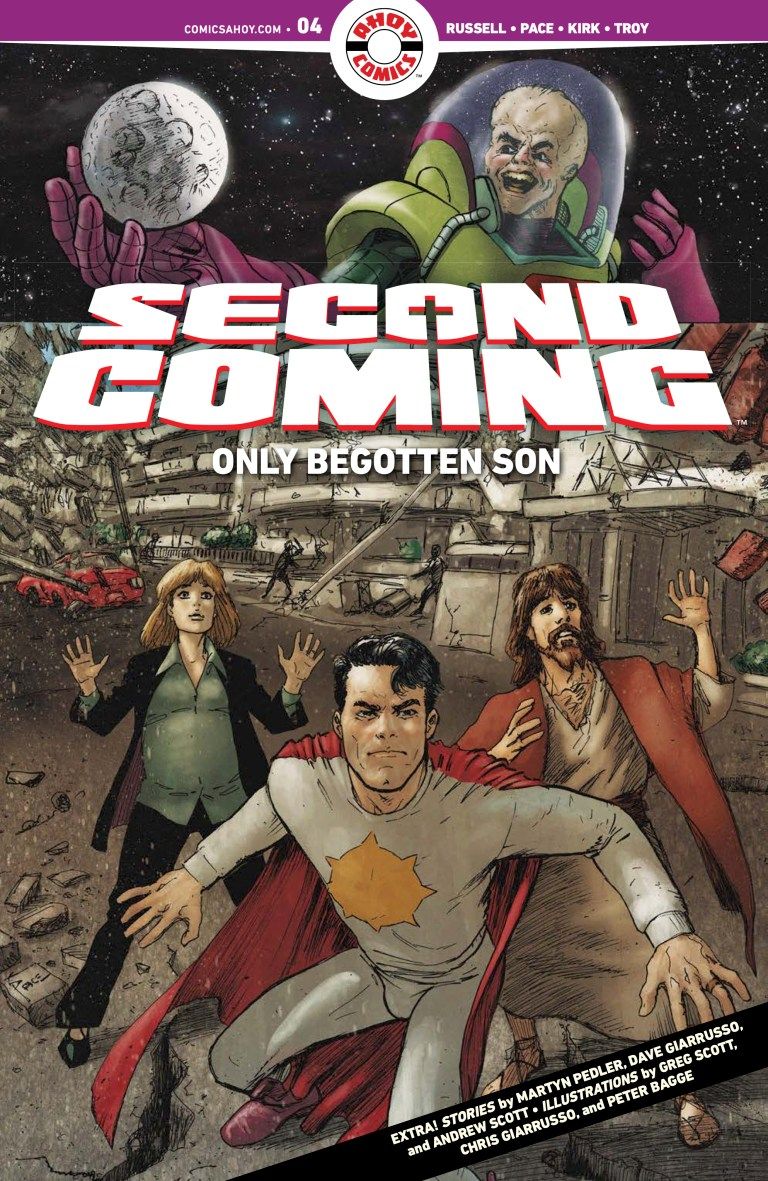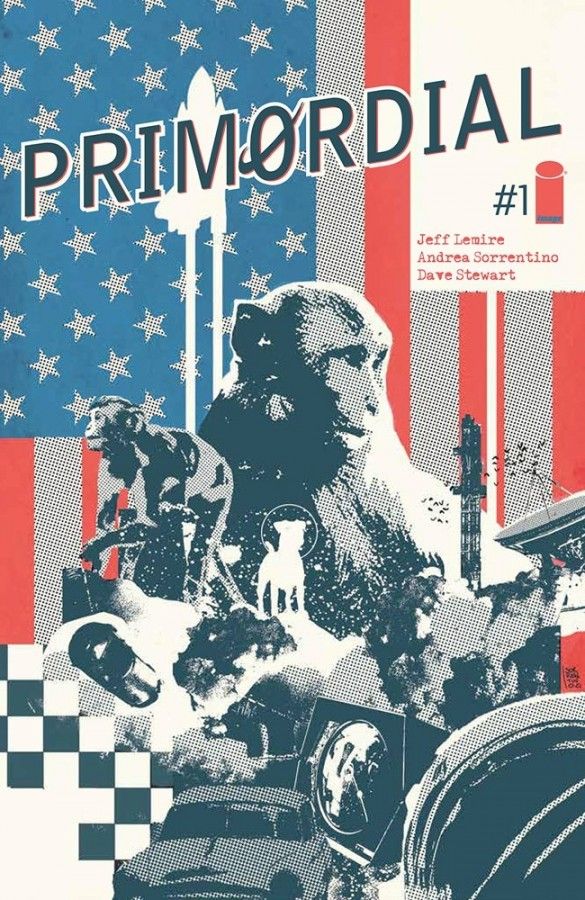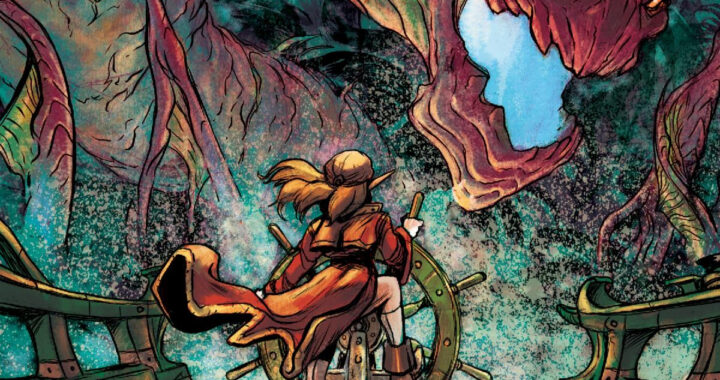
Review: The Lost Fleet: Corsair
 There has been tons of discussion regarding adapting comics and books to film. How the shifting of mediums requires a different type of storytelling. Something that may work in a book does not always translate well to screen. Another process that is not as widely discussed but is just as difficult is taking a novel and transforming it into comic book form. You end up in this limbo scenario where a visual punch is added but you still need to heavily rely on the written word. It is a nearly impossible balance to strike correctly even for the best creators.
There has been tons of discussion regarding adapting comics and books to film. How the shifting of mediums requires a different type of storytelling. Something that may work in a book does not always translate well to screen. Another process that is not as widely discussed but is just as difficult is taking a novel and transforming it into comic book form. You end up in this limbo scenario where a visual punch is added but you still need to heavily rely on the written word. It is a nearly impossible balance to strike correctly even for the best creators.
For The Lost Fleet: Corsair Jack Campbell is actually adapting his own renowned series. The Lost Fleet novels have a large amount of acclaim and popularity behind them and considering the subject matter, it makes sense to see if it could work in comic form. However, writing comics is a very different muscle set than writing novels. Some great novelists have faltered making the transition. Overall Campbell did well working through the normal barriers. While The Lost Flee: Corsair is not without its faults, it is an adaptation that utilizes this new medium effectively by adding quality content to the original property that welcomes both longtime fans and newcomers.
It tells one part of this massive war between the Syndicate and Alliance worlds. Their endless war has finally ended but the battles are still raging. Michael Geary is surprised to be alive. He and his battlecruiser Repulse sacrificed themselves to save the lives of the rest of the fleet. It is one of the perverable out of the frying pan into the fire situations as he discovers he is now a prisoner of the Syndicate, who are not known for keeping prisoners alive for long. Hope arrives in an unlikely source as Destina Aragon, a current commander in the Syndicate army, plans to use Geary to escape from the crumbling Syndicate forces. With his know-how and connection to the legendary Black Jack she may have found a way to get a new life for herself and the rest of her team.
Aragon and Geary“s back and forth is easily the best part of this series. Their unlikely alliance and mutual goals give them a shaky foundation to build a thinly veiled trust. Aragon is a soldier through and through. She feels completely comfortable diving headfirst into a firefight and finding a way out of a no-win situation. Being a ship commander Geary“s thought process is not just on what is in front of him but also three or four moves down the road. At times this dynamic allows them to achieve great success, like when Geary“ holds Aragon back from destroying the team they will need to fly their massive ship. What becomes quickly apparent is the trust Aragon and Geary may share is not reciprocated throughout their fellow teams. Making the chance of this daring escape more and more unlikely as infighting may derail any chance they have at survival.
Overall Campbell“s script is solid and allows the characters to inform the narrative and always drive the action forward. It does take some time to settle in. That is especially the case for some of the dialog that comes off as unnatural and overly expository. Characters will often overly explain themselves and ask questions that are clearly just there to inform the reader. Once the story gets moving most of those issues do dissipate. Being a former Naval Officer himself Campbell can construct some engaging space battles filed with realistic tactics that go beyond the normal Science Fiction space battles. It is in these moments where this book separates itself from other stories of a similar ilk.
Being a comic book adaptation the work of the artist is of course equally important. Similar to Campbell, Andre Siregar“s best work is with the characters. He uses a lot of large panels to give himself plenty of room to shape a scene and more importantly showcase his ability to craft facial expressing. His facial acting adds a lot to all the character interactions. When it comes to the action sequences his work can feel stiff. Moments that should be moving seem static and gradually paced. Siregar does take advantage of the differing settings. Battles inside spaceships feel claustrophobic and inescapable. Firepower gets into every inch and cranny of these condensed rooms making survival seem impossible. When we move out into space the scope of these massive space vessels is made apparent. They are like these behemoth whales violently lashing out at one another in this endless sea of blackness.
Final Thoughts:
When you adapt a known story to a new medium the most important question is if the translation adds something outside of a new way to take in the same old story. The Lost Fleet: Corsair visiaulies this massively realized world for an entirely new audience. It is an adaptation not without noticeable faults, but with a strong character focus, it gives newcomers a reason to go back and experience what came before. If you are a Science Fiction fan on the search for a new series to experience this is one certainly worth your time.
[yasr_overall_rating size=”large”]
Writer: Jack Campbell
Artist:Â Andrew Siregar
Colorist:Â Â Sebastian Cheng
Author Profile
- A fan of all things comics. Growing up on a healthy diet of 90's Batman and X-Men cartoon series ignited a love for the medium that remains strong today.
Latest entries
 ColumnsSeptember 8, 2021What Big Fan teaches us about Fandom
ColumnsSeptember 8, 2021What Big Fan teaches us about Fandom Comic BooksSeptember 2, 2021Review: Second Coming: Only Begotten Son #4
Comic BooksSeptember 2, 2021Review: Second Coming: Only Begotten Son #4 Comic BooksAugust 12, 2021Review of Spider-Man: Spider’s Shadow #5
Comic BooksAugust 12, 2021Review of Spider-Man: Spider’s Shadow #5 Comic BooksAugust 5, 2021Advanced Review: PRIMORDIAL #1 (OF 6)
Comic BooksAugust 5, 2021Advanced Review: PRIMORDIAL #1 (OF 6)









